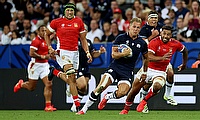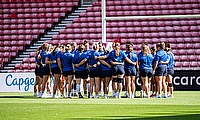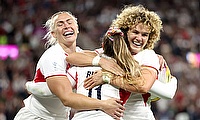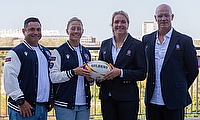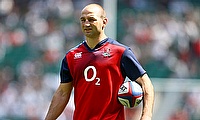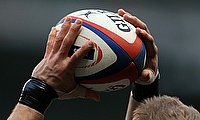Melville Lays Out Blueprint For Success For USA Rugby
One of the predominant goals of the International Rugby Board is to ensure the global growth of the game, with particular emphasis on emerging nations. Although the decision not to award the 2011 World Cup to Japan was an unpopular one, and viewed by many as a step backwards in terms of the games growth, a report published in the same year showed a 19% increase in global participation since the last World Cup in 2007. Nowhere is this growth more prevalent than in the United States, a growth which is even more surprising given the saturation of their sports market, dominated by the likes of American Football, Basketball and Baseball. As a result, we got in touch with former England captain and CEO and President of Rugby Operations for USA Rugby, Nigel Melville, to find out more about the ways in which rugby in the United States has developed and will continue to progress over the coming years.
Melville began his tenure in late in 2006, at a time when the country had roughly 50,000 registered players, and in six short years, that number has more than doubled to over 100,000 registered participants. With around 5,000 coaches and 2,000 referees registered as well, the games growth has been remarkable, and more of the same can be expected, thanks largely to the great work done by Melville and his colleagues over the last six years.
When asked about the development of the game in the United States, Melville was keen to focus on the youth programs that have been implemented and it is his hope that this will create long term sustainability and success for the sport in the country. One such program, Rookie Rugby, has shown continued expansion, both in its' geographical reach and numbers of children participating, since its inception five years ago. It offers younger children the chance to play touch rugby within their gym classes, and as such can develop a love for the game at an early age, hopefully giving the children a desire to play the game at both high school and college levels.
The enormity of college sports in the United States cannot be underestimated, with games televised nationally whilst receiving just as much media attention as their professional counterparts, and this is perhaps one of the greatest challenges faced by Melville as he continues to try and increase participation at all levels. The facts are that men's rugby does not receive the same funding from the National Collegiate Athletic Association that competing sports do, is a considerable obstacle to overcome. There is positive news for women's rugby however, with the sport already being placed on the NCAA Emerging Sports List, and is likely to become a NCAA Championship Sport as its popularity continues to grow.
Although developing youth programs and establishing the sport at both youth and college levels were priorities for Melville, ensuring regular and challenging fixtures for the national team was another obstacle to overcome. Although Melville admitted that the Churchill Cup 'raised the profile' of the 15-a-side game, having a full international schedule, non-'A' games, was needed in order for USA Rugby to improve their rankings. Thankfully such a schedule is now in place, and with hopes of joining the Pacific Nations Cup in the future, USA Rugby may soon find itself regularly competing against the likes of Japan, Tonga, Fiji and Samoa. This has not resulted in the disbandment of the 'A' team however, who will go up against their Canadian, Tongan and Argentinean rivals in the Americas Championship later this year, as they look to develop squad depth and promote the sport domestically.
The growth of rugby in the United States is illustrated not only with the ever increasing numbers of registered participants, but also by increased spectator demand. A 30-10 loss to Italy in Houston this June saw the largest crowd for a USA Rugby match in their 37-year history, with a total of 17,214 fans turning out in a state infamous for its love of American Football. Television coverage has also increased in recent years, with the USA legs of the HSBC Sevens World Series and the 2011 World Cup being shown by the NBC network, and a deal has already been reached for the network to also televise the 2015 World Cup. The return of the 7-a-side game to the Olympics in 2016 will also help increase interest in the 15-a-side game and could bring in potential players from the 7-a-side format which already has a strong following in the United States.
To develop the game of rugby in the United States was always going to be a difficult task for Melville, especially given the big money draw of both American Football and Basketball, both of which are sports which require similar levels of physicality and athleticism to rugby. This makes it that much harder to attract interest at both school and college level, despite the relatively remote chances of a person being able to forge a professional career for themselves in these sports. Although it will be some years before we see the United States become a global force in the game, they are taking all the right steps, and doing so quicker than most expected. Other developing rugby nations could do well to take note from Melville and the programs he has implemented since his appointment. He has approached a difficult job with pragmatism and common sense, and has quickly ensured the United States are leading the way for the emerging nations.

